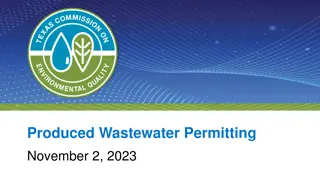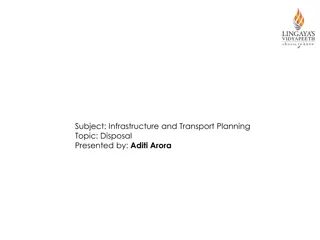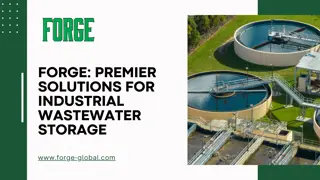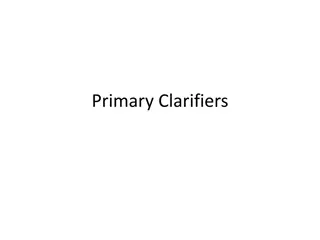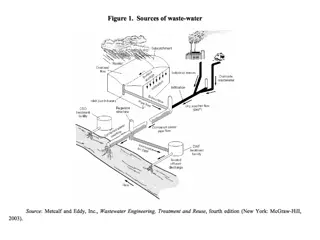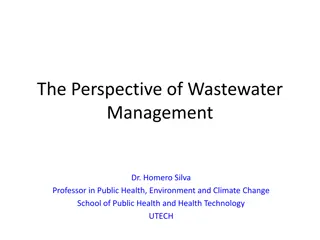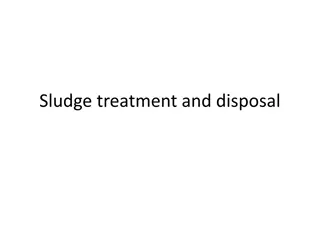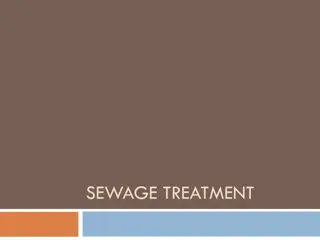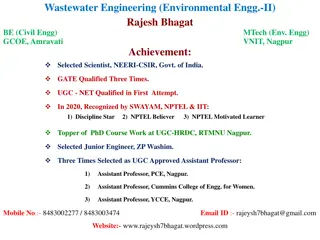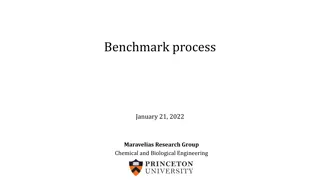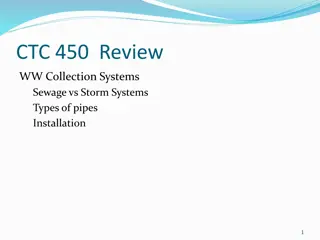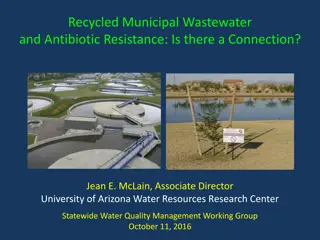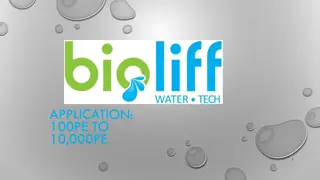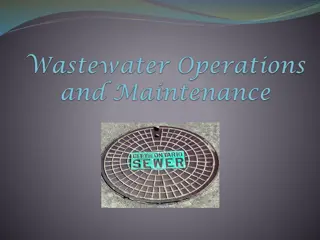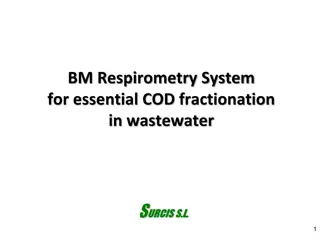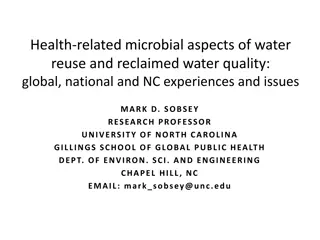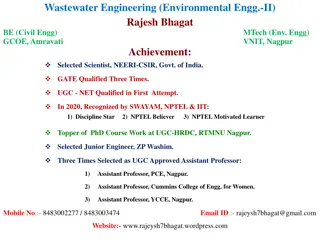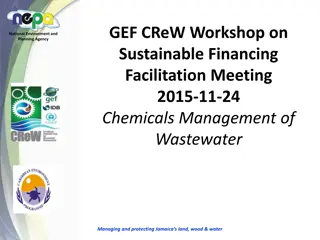Overview of Wastewater Treatment Processes
Wastewater treatment involves primary and secondary processes to reduce suspended solids and BOD levels. Primary treatment utilizes sedimentation tanks followed by sludge thickening, while secondary treatment involves biological methods such as trickling filters. Various secondary treatment methods like activated sludge, oxidation ponds, and rotating biological contactors further purify the water. The final clarifiers remove additional sludge before discharge back to the river. Disposal of sludge, previously done through landfill or incineration, now faces challenges due to environmental concerns and high costs.
Download Presentation

Please find below an Image/Link to download the presentation.
The content on the website is provided AS IS for your information and personal use only. It may not be sold, licensed, or shared on other websites without obtaining consent from the author. Download presentation by click this link. If you encounter any issues during the download, it is possible that the publisher has removed the file from their server.
E N D
Presentation Transcript
Wastewater Treatment Sludge from the primary sedimentation tanks is pumped to the sludge thickener. - more settling occurs to concentrate the sludge prior to disposal Primary treatment reduces the suspended solids and the BOD of the wastewater. From the primary treatment tanks water is pumped to the trickling filter for secondary treatment. Secondary treatment will further reduce the suspended solids and BOD of the wastewater. 1
Wastewater Treatment Secondary Treatment 2
Wastewater Treatment Secondary Treatment Secondary treatment is a biological process Utilizes bacteria and algae to metabolize organic matter in the wastewater In Cape Girardeau secondary treatment occurs on the trickling filter 3
Wastewater Treatment Secondary Treatment the trickling filter does not filter the water water runs over a plastic media and organisms clinging to the media remove organic matter from the water 4
Wastewater Treatment Secondary Treatment Activated sludge process 5
Wastewater Treatment Secondary Treatment Oxidation pond 6
Wastewater Treatment Secondary Treatment Rotating biological contactors 7
Wastewater Treatment From secondary treatment on the trickling filter water flows to the final clarifiers for further removal of sludge. The final clarifiers are another set of primary sedimentation tanks. From the final clarifiers the water is discharged back to the river. The final clarifiers remove additional sludge and further reduce suspended solids and BOD. 8
Wastewater Treatment Disposal of Sludge or Biosolids The residue that accumulates in sewage treatment plants is called sludge (or biosolids). -- in the past, the disposal of the sludge done by landfill or incineration -- landfill disposal discontinued to the threat of leachate -- incineration discontinued because of the ineffectiveness and cost 9
Wastewater Treatment Disposal of Sludge or Biosolids Treatment and disposal of sewage sludge are major factors in the design and operation of all wastewater treatment plants. Two basic goals of treating sludge before final disposal are to reduce its volume and to stabilize the organic materials. Stabilized sludge does not have an offensive odour and can be handled without causing a nuisance or health hazard. Smaller sludge volume reduces the costs of pumping and storage. 10
Wastewater Treatment Thickening of sludge 11
Anaerobic digestion of sludge Wastewater Treatment 12
Wastewater Treatment Drying beds of sludge 13
Typical steps in modern wastewater treatment plant File:ESQUEMPEQUE-EN.jpg 14



